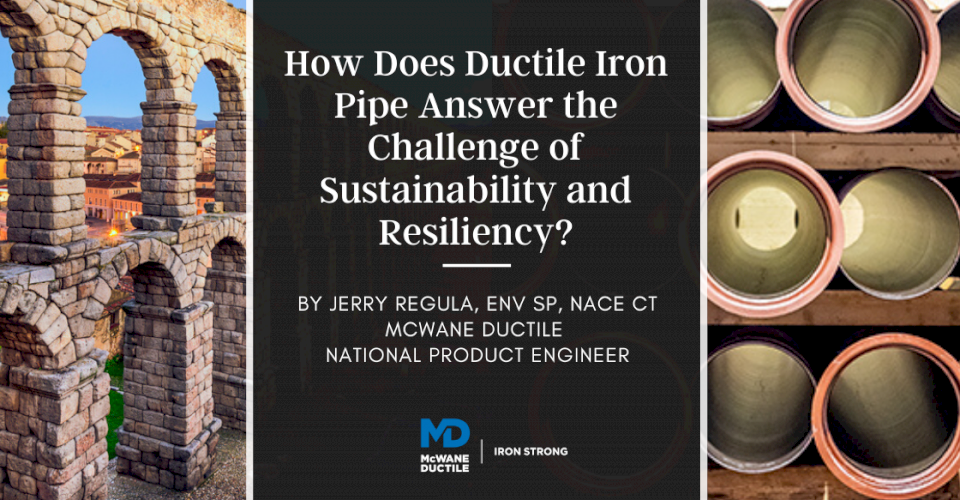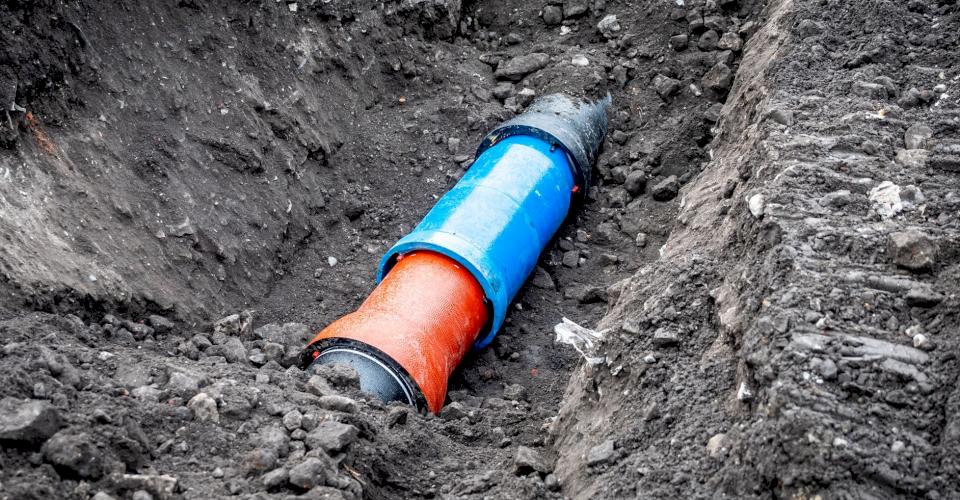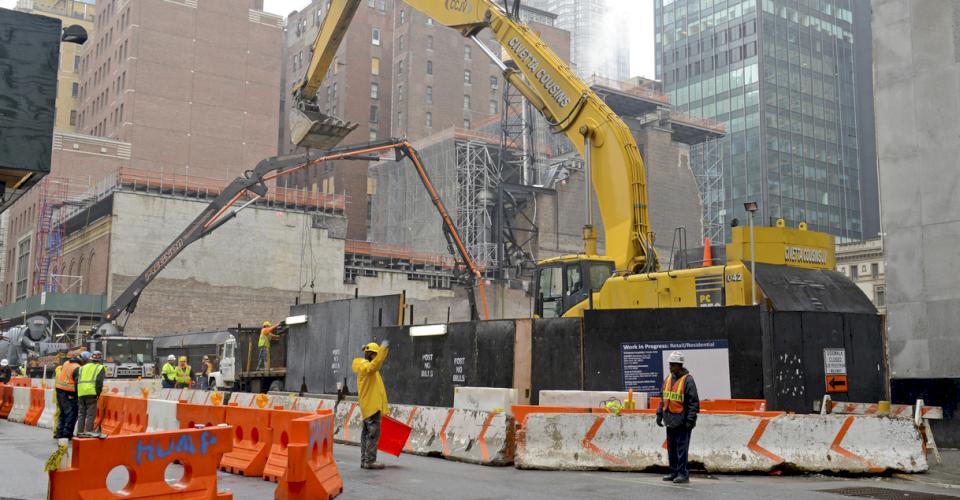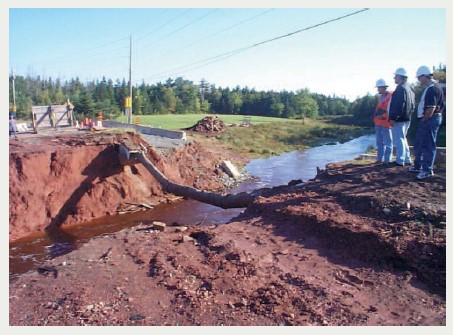Sustainability and Resiliency are today's buzzwords, especially concerning water and wastewater systems, but what does this really mean to you, the designer, manager and/or operator? Utility people today are bombarded with the answer to this question, and we believe that there is no one answer because every system is unique and experiences different priorities and different challenges.
The challenges of Sustainability and Resiliency are not new to Utilities, as they have dealt with these challenges for as long as Utilities have existed. It is in these present times that we now have specific words and ways to define them. That is not a criticism of the past but a recognition of the importance of addressing these challenges directly. In this first installment of a series of blogs, we will look at the different aspects of Sustainability and Resiliency and how Ductile iron pipe (DI pipe) answers those challenges.
What is Sustainability?
We all want to do the best we can for future generations and leave behind structures that stand the test of time. The world is full of such examples; from the Roman Aqueducts to the roads to the Great Pyramids and other wonders of the world. To meet this challenge today, we recognize that we must not only look at how these constructs are built but also the impacts of what goes into these constructs, including methods and materials.
The ENVISION process is an excellent guideline for meeting today’s challenges. Like LEED ratings (Leadership in Energy and Environmental Design), ENVISION rating not only applies to the impact of the finished project but also on the effects of its construction and the materials used in it. Life Cycle Cost Analysis of materials, recycled content, reuse, and recyclability should all be considered. For more information about Life Cycle Cost, see this Iron Strong Blog by my colleague, Roy Mundy. Today, let’s focus on reuse as it pertains to Sustainability and consider recycled content and recyclability in our next blog.
There was once a situation in Detroit where an 80+ year old 48-inch main was damaged and two pieces of old pipe were removed for repair. Other than the one broken section of pipe, the other pipe was in good condition, and Detroit salvaged one full length.
The salvaged pipe was cleaned and placed in their inventory for future reuse. This older large-diameter pit cast pipe was manufactured at different diameters than today's DI pipe, so salvaging a piece was a smart maneuver for future connections to these old pipes. Many Utilities salvage old discontinued products for compatibility in case of a repair need.
A Utility in Canada reused several thousand feet of large diameter DI pipe during the replacement of a failing concrete pipeline. There are undoubtedly many other instances of iron pipe being used for temporary service and subsequently salvaged for reuse or reinstallation.
DI pipe has also been used for snowmaking service at ski areas where the pipelines are often relocated in season and removed during the offseason. DI pipe is well suited for these types of applications and installations due to its inherent high strength and durability as well as the myriad of easily assembled, disassembled, and leak-free jointing options.
What is Resiliency?
In the past, we often just thought of Resiliency as, "Well, it doesn't break, so that's a good thing" sort of view, but today we have a deeper understanding of what Resiliency means to each of us. And to different Utilities, Resiliency can have a different meaning, especially when it comes to pipes and pipelines.
A utility manager who has experience in various Utilities in different parts of the country experiences these differences firsthand. For example in the U.S., northern Utilities, like in New England, have concerns about increased external loading from frost and the ground shifting effects of freezing and thawing. They may share concerns with a utility in the coastal Carolinas that experiences high groundwater and pump and pressure cycles from a pumped system from a relatively flat coastal area. Or they may share the concerns of the high static pressures of a system located somewhere hilly or mountainous like West Virginia.
These concerns would be different than much of Texas, which, while also relatively flat in many areas, has a higher incidence of expansive soils. These examples barely even touch on the effects of seismic issues faced in other regions around the country, particularly the West Coast and some other states or congested underground environments of downtowns and urban areas. See this Iron Strong blog for another great discussion on Unaccounted For Water – The Phantom of the Forgotten City, also by Roy Mundy.
Some of these Utilities need pipes that have exceptionally high crushing strength along with high internal pressure resistance. Some need pipes that can withstand the force of repeated changes in pressure and flow (cyclic loading) that occur in pumped systems.
Some need exceptional joint restraint capability combined with extreme flexibility. How does a utility know where to start? A useful resource would be The U.S. EPA's (Environmental Protection Agency) website, "America's Water Infrastructure Act: Risk Assessments and Emergency Response Plans."
As most of you know, this Act has a Risk and Resilience Assessment requirement: "Each community water system...shall assess the risks to, and resilience of, its system.
Further EPA states: "Such an assessment shall include:
- the risk to the system from malevolent acts and natural hazards.
- the resilience of the pipes and constructed conveyances.”
With due dates from March 31, 2020 (for Utilities serving populations over 100,000 to June 30, 2021 (for small Utilities) and Emergency Response Plans to address these risks due six months later, many Utilities have already established their Resiliency needs. While the EPA does require addressing specific threats like earthquakes, it does not require a particular methodology.
Minimize Risk With Ductile Iron Pipe
While assessing these risks is a daunting task, minimizing them is much easier by using DI pipe. With Ductile iron, a utility will have a pipe that:
- Has the highest internal pressure capabilities of any water pressure pipe to handle high static and surge pressures.
- Is not subject to failure by cyclic loading in pumped systems, as may occur with alternate materials such as plastics.
- Has high ring strength to resist high frost loadings and expansive soils.
- Its performance is not compromised by temperature changes or extremes.
- Has a variety of joint restraining systems that prevent joint separation during events like earthquakes, ground shifts, and subsidence and from floods and bedding undermining that occur in storm surges during hurricanes and other flooding events.
- Is the most durable pipe material and least susceptible to damage from construction or disturbance near the pipeline.
Need Assistance with Your Waterworks Project?
For more help and information on how McWane Ductile iron pipe can help you with making your system more Sustainable and Resilient, please contact one of our ENVISION Sustainability Professionals.
We also have team members who’ve managed small and large water utility systems, served in engineering consulting firms, and bring decades of experience in solving field issues involving pipeline construction and operation. From design, to submittal, to installation, we strive to provide education and assistance to water professionals throughout the water and wastewater industry.
Sources:
- S. EPA, Risk and Resilience Assessment Requirements and Assistance Resources.
- S. EPA, Baseline Information on Malevolent Acts for Community Water Systems.
- S. EPA, Creating Resilient Water Utilities.
- American Water Works Association (AWWA) (2015). “Buried No Longer: Confronting America’s Water Infrastructure Challenge.”
- Design of Water Supply Pipe Networks, Swamee and Sharma
- A Framework to Evaluate the Life Cycle Costs and Environmental Impacts of Water Pipelines, Thomas, Mantha, and Carol C. Menassa, University of Michigan
- Ductile Iron Pipe Research Association (DIPRA), (2015). “GUIDELINES Installation Guide for DI Pipe.”
- Ductile Iron Pipe Research Association (DIPRA), Ductile Iron Pipe Tapping.
- Ductile Iron Pipe Research Association (DIPRA), Celebrate Sustainable Infrastructure.
- The Institute for Market Transformation to Sustainability, SMaRT Products Standards.










